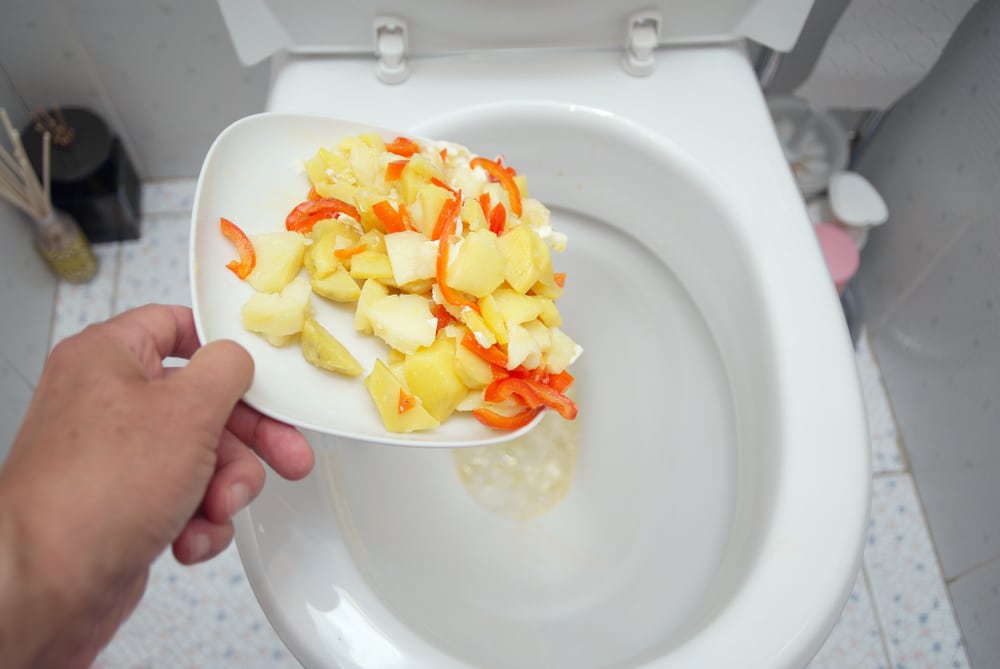Is it Recommended to Dispose of Food Down the Toilet?
Is it Recommended to Dispose of Food Down the Toilet?
Blog Article
They are making several great annotation on the subject of What Can Happen If You Flush Food Down the Toilet? in general in this great article underneath.

Intro
Many individuals are usually confronted with the problem of what to do with food waste, specifically when it concerns leftovers or scraps. One typical inquiry that occurs is whether it's fine to purge food down the commode. In this post, we'll look into the reasons individuals may consider purging food, the effects of doing so, and alternative methods for proper disposal.
Reasons that people might take into consideration flushing food
Lack of awareness
Some people might not know the potential damage triggered by purging food down the bathroom. They might incorrectly think that it's a harmless method.
Comfort
Flushing food down the bathroom might look like a quick and very easy service to throwing away unwanted scraps, particularly when there's no close-by garbage can available.
Negligence
Sometimes, individuals may simply select to flush food out of sheer laziness, without thinking about the effects of their activities.
Repercussions of flushing food down the commode
Environmental influence
Food waste that ends up in rivers can add to contamination and damage water ecological communities. Furthermore, the water made use of to purge food can strain water resources.
Plumbing concerns
Purging food can bring about clogged up pipelines and drains pipes, creating pricey pipes repair services and troubles.
Sorts of food that ought to not be purged
Coarse foods
Foods with coarse appearances such as celery or corn husks can get entangled in pipes and trigger blockages.
Starchy foods
Starchy foods like pasta and rice can soak up water and swell, causing blockages in pipelines.
Oils and fats
Greasy foods like bacon or food preparation oils need to never ever be purged down the commode as they can strengthen and create clogs.
Proper disposal methods for food waste
Making use of a waste disposal unit
For homes outfitted with waste disposal unit, food scraps can be ground up and purged with the pipes system. Nonetheless, not all foods are suitable for disposal in this way.
Recycling
Certain food product packaging materials can be reused, reducing waste and reducing environmental influence.
Composting
Composting is an environmentally friendly method to get rid of food waste. Organic products can be composted and made use of to enrich soil for gardening.
The value of proper waste administration
Lowering ecological injury
Appropriate waste monitoring practices, such as composting and recycling, assistance decrease air pollution and protect natural resources for future generations.
Protecting pipes systems
By preventing the technique of flushing food down the bathroom, property owners can prevent expensive plumbing fixings and keep the honesty of their pipes systems.
Conclusion
In conclusion, while it might be alluring to purge food down the bathroom for ease, it's important to comprehend the potential effects of this activity. By taking on proper waste administration techniques and dealing with food waste sensibly, people can contribute to healthier pipes systems and a cleaner atmosphere for all.
FLUSH FOOD DOWN THE TOILET?
FLUSHING FOOD CAN CAUSE BLOCKED DRAINS IN YOUR HOME
All of the plumbing fixtures in your home are connected to the same sewer pipe outside of your home. This outdoor sewer pipe is responsible for transporting all the wastewater from your home to the Council sewer mains. Even small pieces of food that go down the kitchen sink can cause problems for your sewer. It should therefore be obvious that flushing larger bits of food, such as meat, risks a clog in either the toilet itself or the sewer pipes. Flushing greasy food is even more problematic because oil coagulates when it cools, coating the interior lining of your pipes.
THE TOILET IS NOT A BIN
Food isn’t the only thing that people shouldn’t be flushing down the toilet. People use the toilet to dispose of all kinds of things such as tampons, makeup wipes, dental floss, kitty litter and even underwear. Water goes to great lengths to educate residents about the high costs and stress placed on wastewater treatment systems simply from people flushing the wrong stuff down the toilet. It costs taxpayers millions of dollars each year, and homeowners thousands in blocked drain repairs.
FLUSHING FOOD IS A WASTE OF WATER
Flushing food is a waste of our most precious resource - water. In June this year Level 1 water restrictions were introduced to protect water supply from drought conditions. Much of New South Wales continues to be affected by prolonged drought with recent figures revealing up to 97 per cent of the state remains in drought. Depending on whether you have a single or dual flush toilet, every single flush uses between five and 11 litres of water. In the current climate this is a huge amount of water to be wasting on flushing food that should be placed in the bin (or better yet, the compost).
https://www.jabplumbingsolutions.com.au/blog/can-you-flush-food-down-the-toilet

We had been made aware of that editorial on Think Twice Before Flushing Food Down Your Toilet from a good friend on a different blog. Do you know anybody else who is excited about the topic? Feel free to promote it. We take joy in your readership.
Information Here Report this page